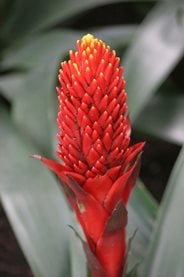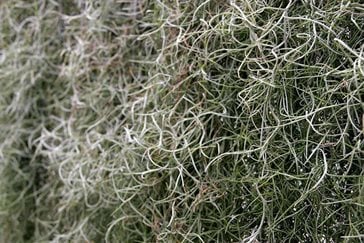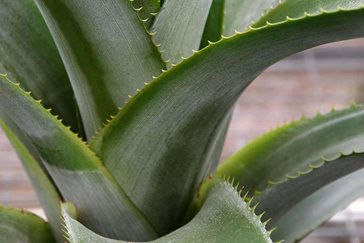Try your hand at growing bromeliads as houseplants; they are colourful, exotic and some are easy to grow, says Greg Ovenden, horticulturist at RHS Garden Wisley
 If you fancy a houseplant that's a little unusual, choose a bromeliad. They have brilliant, almost unnatural-looking leaves and the flowers can be even more outstanding.
If you fancy a houseplant that's a little unusual, choose a bromeliad. They have brilliant, almost unnatural-looking leaves and the flowers can be even more outstanding.
Bromeliads are a large family of flowering plants native to tropical America with a few species found in the American subtropics. There is such a large variety of bromeliads that there is one suited to nearly every position within the home and garden environment from a large bromeliad, such as Puya raimondii - which might survive outside in coastal areas of the UK - to the more tropical and much smaller Spanish moss (Tillandsia usneoides).
The most common types of bromeliads available from plant centres are usually hybrids of Vriesea and Guzmania, which can come in a large variety of colours from reds to whites. These are a great houseplant as they are ideal for most rooms in dappled sun. A striking bromeliad is Guzmania conifera (right) which has silvery leaves and bright red flowers.
What you need for success
They will just need a few things:
-
Monthly liquid feed.
-
Watering roughly every two weeks depending on the situation. They should be watered by filling the rosette formed by the leaves with water and also lightly spraying them over (this can be done on a daily basis). I find rain water is best.
-
Repotting when roots have completely filled the pot. I find it best not to over pot them as they are more prone to rotting off; bear in mind that they are originally epiphytes so they would be clinging onto trees or rocks in their natural habitat.
-
Compost: I use a mix of general purpose compost and fine bark but there are some great ready-mixed bromeliad composts on the market.
 Tillandsias (right) or air plants also make great houseplants and as they require no compost there is no mess. Tillandsia require full sun (be careful not to position near a heater as this will dry them out), and a daily rinse with rain water. Some garden centres sell tillandsias mounted onto bark or as decorations in glass terrariums. This is ideal as the glass creates a nice humid microclimate. The ideal position for air plants in the house is in either the bathroom or kitchen as there is most often moisture in the air in these rooms.
Tillandsias (right) or air plants also make great houseplants and as they require no compost there is no mess. Tillandsia require full sun (be careful not to position near a heater as this will dry them out), and a daily rinse with rain water. Some garden centres sell tillandsias mounted onto bark or as decorations in glass terrariums. This is ideal as the glass creates a nice humid microclimate. The ideal position for air plants in the house is in either the bathroom or kitchen as there is most often moisture in the air in these rooms.
During my time at Wisley I have found bromeliads to be such a diverse group of plants. Nearly every month there will be at least one in flower and there are still plants that I have never seen flower. I am particularly excited about seeing our Vriesea imperialis (syn. Alcantea imperialis) flowering as the flowers bracts can be around 6ft tall.
Currently we have Quesnelia liboniana flowering which has bright orange bracts and deep navy flowers, as well as Neoregelia tigrina which is much smaller at only 10cm tall and has amazing tiger-like stripes and deep purple flowers which will appear within the rosette.
Growing from seed
 Last year I started growing bromeliads from seed, and have found it rewarding. It is relatively easy and some plants grow very quickly. I sowed seed of Aechmea mcvaughii (right) in 2011 and they are now huge and I cannot wait to see the flower. I find the best source of bromeliad information is The Bromeliad Society International and the Florida Bromeliad Society which has some great photo indexes for identification.
Last year I started growing bromeliads from seed, and have found it rewarding. It is relatively easy and some plants grow very quickly. I sowed seed of Aechmea mcvaughii (right) in 2011 and they are now huge and I cannot wait to see the flower. I find the best source of bromeliad information is The Bromeliad Society International and the Florida Bromeliad Society which has some great photo indexes for identification.
Read more about caring for houseplants

